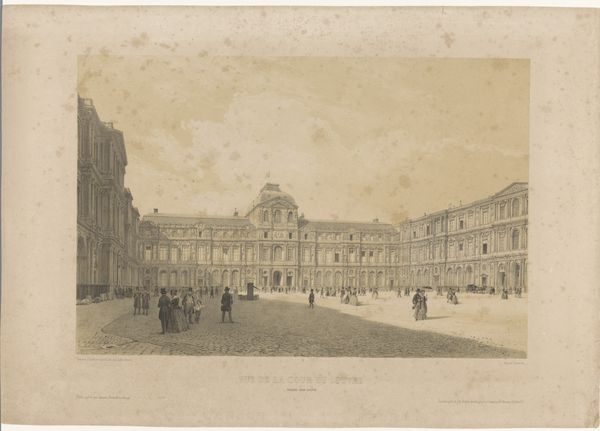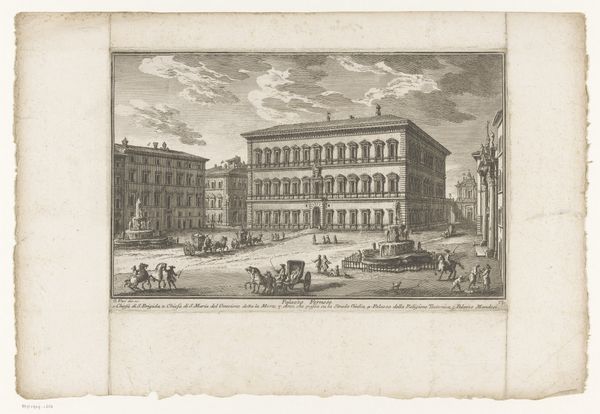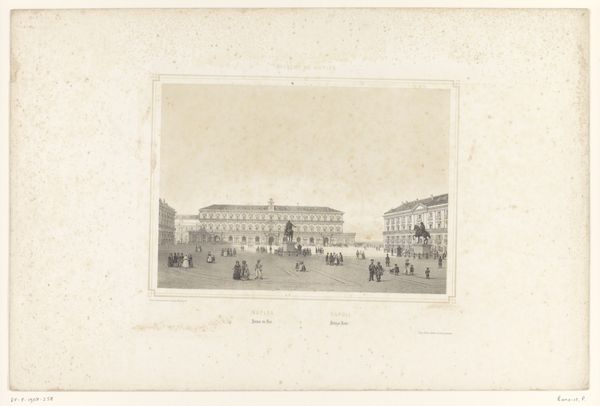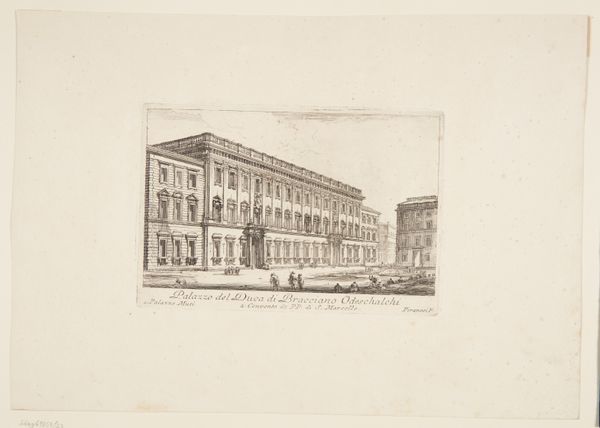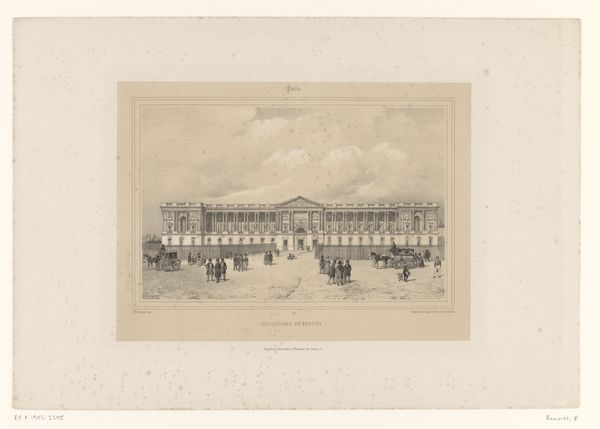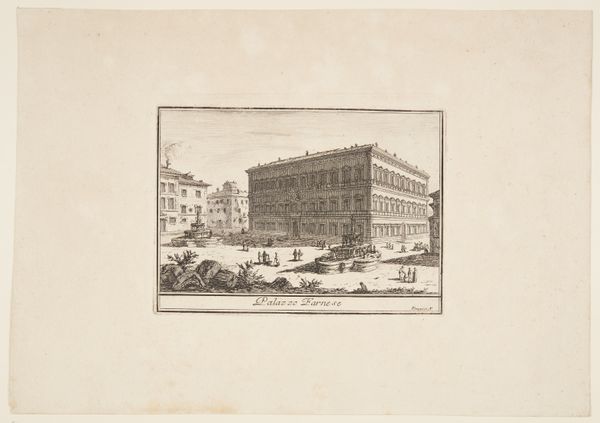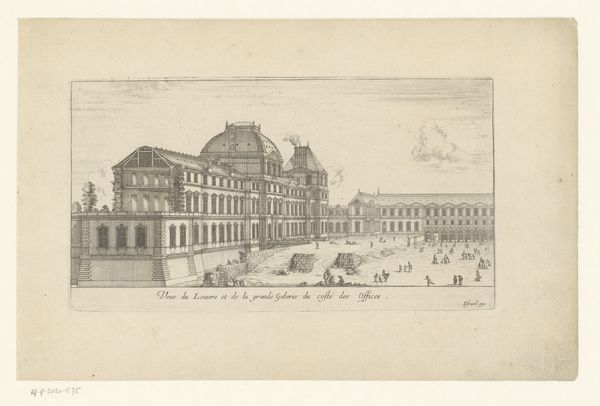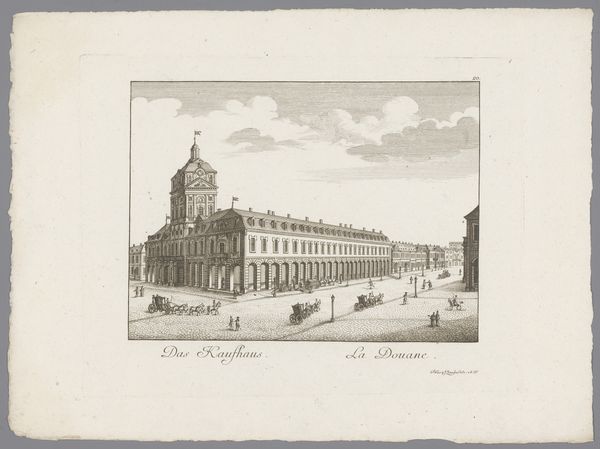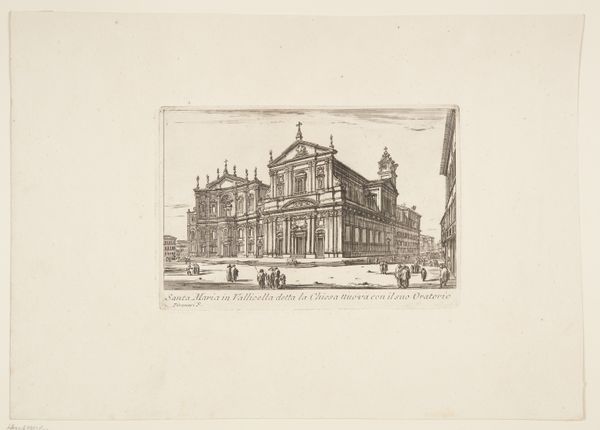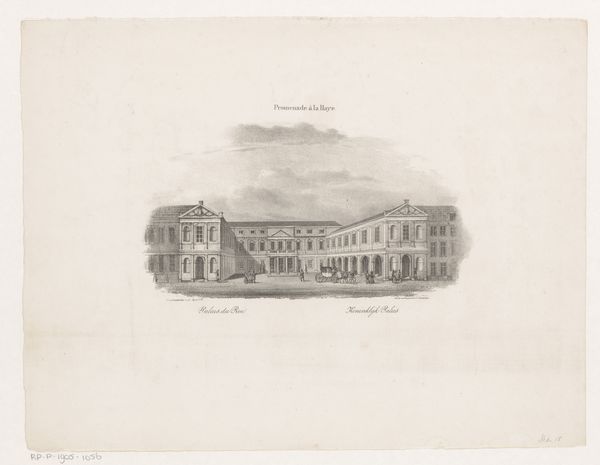
print, etching, engraving, architecture
#
neoclacissism
# print
#
etching
#
old engraving style
#
cityscape
#
history-painting
#
engraving
#
architecture
Dimensions: height 302 mm, width 442 mm
Copyright: Rijks Museum: Open Domain
Curator: This delicate etching offers a glimpse into the Cour Carrée of the Louvre, crafted by Charles-Claude Bachelier sometime between 1845 and 1847. Editor: It strikes me as a ghostly scene, almost dreamlike. The meticulous lines feel precise, yet the overall effect evokes a sense of historical distance. Curator: Absolutely. Bachelier’s neoclassical style really emphasizes order and symmetry. The Louvre itself, especially within its historical context, was meant to symbolize power, intellect, and the legacy of civilization. Editor: Power certainly comes to mind. I’m struck by how the architecture dominates the people. Tiny figures almost swallowed by the scale of the building—perhaps highlighting the individual's relationship to the institution. Were everyday Parisians even welcome in this space at the time? Curator: While the Louvre evolved significantly during this period, originally built as a fortress, it went through several transformations serving various political and cultural purposes. The architectural decisions, informed by classicism, carried echoes of empires past, seeking to legitimize current power through historical connections. Editor: I see it too. These aren't merely architectural choices, but statements of cultural dominance. Think of how many artists, particularly women and people of color, were historically excluded from spaces like this, even as they shaped the very narratives that the Louvre contained. Curator: Indeed. The Louvre's architecture serves as a visual anchor, continually evoking the complex and multi-layered legacy of Western European history. It is difficult to consider history-painting without remembering art history’s exclusion of various participants in the narrative. Editor: Yes, considering that history also means wrestling with who has been erased, and why. Art should challenge the accepted narrative, even if that narrative resides within the stones of a monument like this one. Thanks for a powerful conversation about permanence and the many faces of progress. Curator: Likewise, I appreciate that we have been able to unearth some more elusive symbolic elements to see them for our current context.
Comments
No comments
Be the first to comment and join the conversation on the ultimate creative platform.
